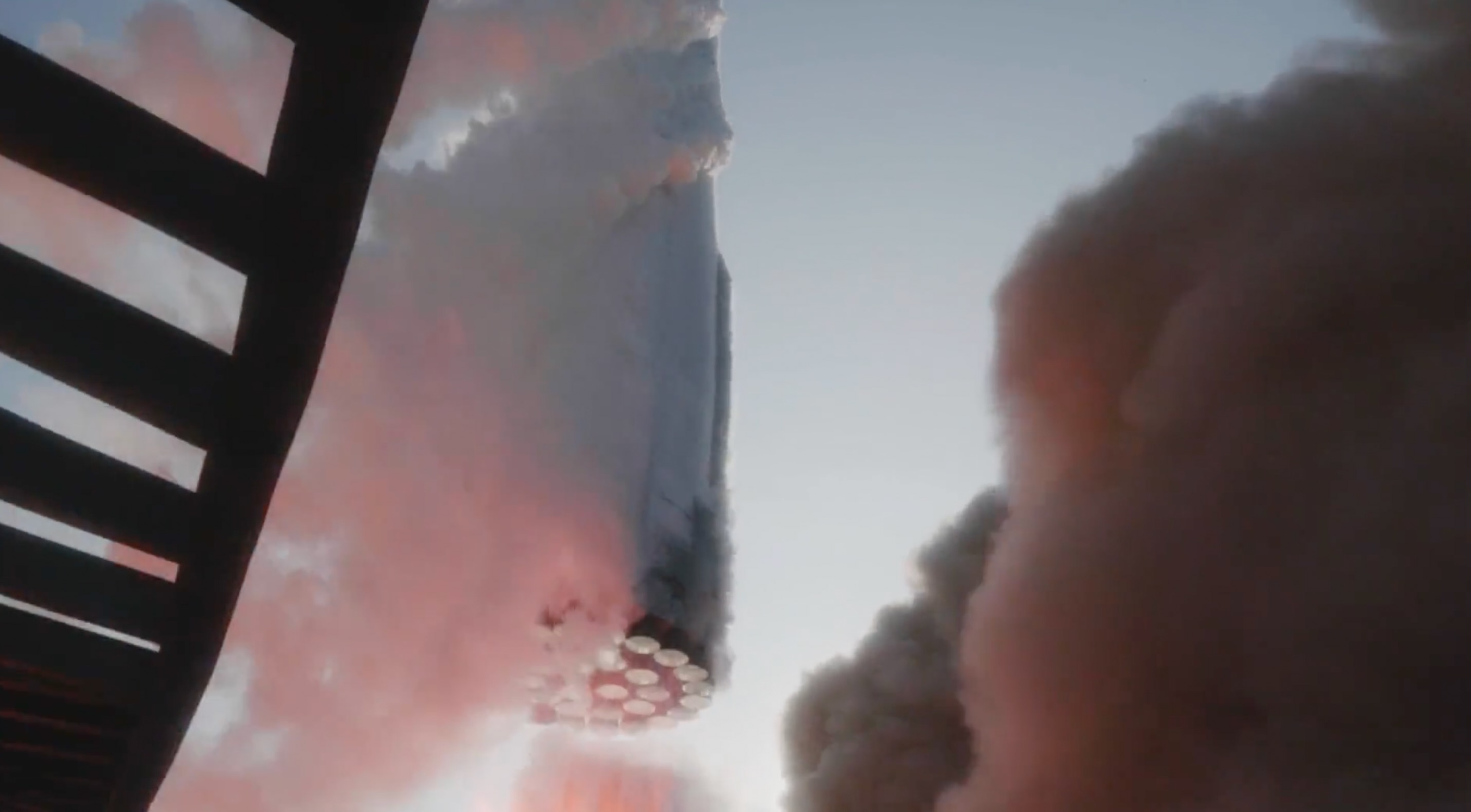The enormous size and power of SpaceX's Starship are on full display in a slow-motion video of the giant vehicle's landmark liftoff on Thursday (April 20).
That 26-second video, which the company posted on Twitter on Thursday evening, was captured by a camera mounted on the orbital launch tower at Starbase, SpaceX's facility in South Texas.
Starship is heard before it's seen in the close-up footage: Its first-stage Raptor engines generate a wall of sound that the stainless-steel vehicle rises out of, like a monster from the deep.
The entire 394-foot-tall (120 meters) behemoth passes before us, nose to tail. We even catch a brief glimpse of the Raptors glowing bright before the dust kicked up by the liftoff billows in and obscures all.
Related: Relive SpaceX's explosive 1st Starship test flight in these incredible launch photos
Starship liftoff in slow motion pic.twitter.com/KqHjqwP88ZApril 22, 2023

Starship consists of a huge first-stage booster called Super Heavy and a 165-foot-tall (50 meters) upper-stage spacecraft known as Starship. Both elements are designed to be fully and rapidly reusable, a breakthrough that SpaceX founder and CEO Elon Musk thinks will make Mars colonization — his long-held dream — economically feasible.
Starship is both the biggest and most powerful rocket ever built. Super Heavy's 33 Raptors engines generate 16.5 million pounds of thrust at liftoff — nearly twice as much as the previous record holder, NASA's Space Launch System megarocket.
Get the Space.com Newsletter
Breaking space news, the latest updates on rocket launches, skywatching events and more!
Thursday marked the first-ever launch of a fully stacked Starship vehicle. The goal was to send the Ship 24 upper-stage prototype to space for a partial circuit of Earth, ending in a splashdown in the Pacific Ocean near Hawaii. The Booster 7 Super Heavy vehicle was supposed to come down for a hard ocean landing of its own, in the Gulf of Mexico off the South Texas coast.
Neither of those things happened on Thursday. Starship managed to clear the tower, get through Max-Q (the point during a flight when stresses on a vehicle are the highest) and reach a maximum altitude of 24 miles (39 kilometers). But it suffered a few problems that led to its demise.
For example, multiple Raptors didn't fire as planned. Three of the engines seemed not to ignite at liftoff, and several others conked out during the flight as well. In addition, the first and second stages failed to separate as planned just under three minutes after liftoff, and the huge vehicle began to tumble.
SpaceX then engaged Starship's flight termination system, destroying the vehicle high above the Gulf of Mexico four minutes after liftoff.
Still, SpaceX cheered the result, stressing that the mission generated lots of data that will improve future iterations of the vehicle. And another Starship will lift off from Starbase relatively soon, if all goes according to plan.
"Congrats @SpaceX team on an exciting test launch of Starship! Learned a lot for next test launch in a few months," Musk tweeted on Thursday.
Mike Wall is the author of "Out There" (Grand Central Publishing, 2018; illustrated by Karl Tate), a book about the search for alien life. Follow him on Twitter @michaeldwall. Follow us on Twitter @Spacedotcom or Facebook.
Join our Space Forums to keep talking space on the latest missions, night sky and more! And if you have a news tip, correction or comment, let us know at: community@space.com.

Michael Wall is a Senior Space Writer with Space.com and joined the team in 2010. He primarily covers exoplanets, spaceflight and military space, but has been known to dabble in the space art beat. His book about the search for alien life, "Out There," was published on Nov. 13, 2018. Before becoming a science writer, Michael worked as a herpetologist and wildlife biologist. He has a Ph.D. in evolutionary biology from the University of Sydney, Australia, a bachelor's degree from the University of Arizona, and a graduate certificate in science writing from the University of California, Santa Cruz. To find out what his latest project is, you can follow Michael on Twitter.









